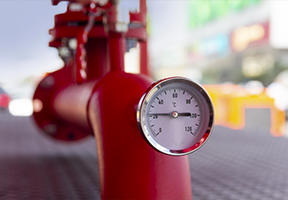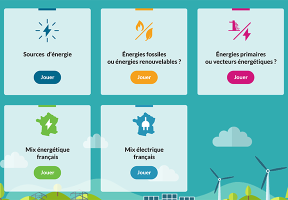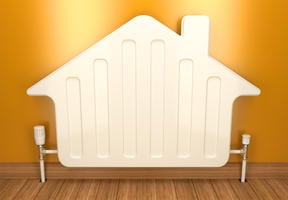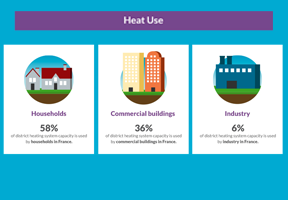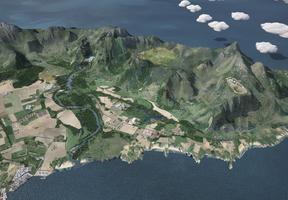A History of Heating: From Taming Fire to Connected Houses
5 min read
Heating meets a specific need (it keeps us warm), but it is also a reflection of social trends, representing the “hearth” around which we gather. Heating systems have also evolved over time in line with the development of energy sources and technological innovations. Here are a few images to give you an overview of the history

1. “Prehistoric Pompeii”
Ever since mastering fire, human beings have been using it to stay warm, cook food and keep wild animals away. The first indoor ovens appeared in huts during the Bronze Age. Around 1660 BCE – that is, 17 centuries before the destruction of Pompeii and Herculaneum – Vesuvius erupted, with clouds of ash petrifying the village of Nola. An oven was found almost fully intact inside one of the huts (photo). Archaeologists say that vents in the roof were used to let light and smoke through.

2. The Roman Hypocaust
The Romans, and the Gallo-Romans in the Gaul region, designed an underfloor heating system called a hypocaust to heat their thermal baths. They lit in a small circular chamber (praefurnium) that was connected to the hypocaust. This was covered by a “suspended” floor (suspensura), supported by evenly spaced piers of square bricks. Bathers had to wear wooden-soled sandals, so they didn’t burn themselves! This photo shows the Escolives-Sainte-Camille site, near Auxerre in central France.

3. The Fireplace Revolution
The biggest problem with combustion-based heating is smoke extraction. During the Early Middle Ages (5th-10th century), people mainly used outdoor braziers to keep warm. The first fireplaces appeared in castles and abbeys in France during the 11th century, slowly spreading into towns and then the countryside. The hearth, the stone-lined area below the chimney, became a vibrant hub of activity. People warmed themselves up, cooked, dried their laundry, held meetings and even had parties “around the fire”. Oil painting on wood by Dutch painter Pieter Aertsen (1508-1575).

4. A Social Tie That Has Stood the Test of Time
The fireplace has never stopped representing home comfort and a place where we enjoy being with others. Between 1933 and 1944, American President Franklin D. Roosevelt began holding radio “fireside chats”. Former French President Valéry Giscard d’Estaing used the same expression when he recorded his New Year’s message in front of the fireplace. Here you can see presidential candidate George W. Bush, who would become President of the United States between 2001 and 2009, trying the idea for himself next to his wife.

5. The Fireplace as Decoration
Over the centuries, the fireplace has become a decorative item, with pillars and a mantelpiece made from marble, stucco or wood. Here you can see the fireplace in Marie Antoinette’s bedchamber in the Palace of Versailles. Today, with wood-fired heating making a comeback, interior designers are also transforming “inserts” into decorative pieces.

6. The Stove Rises to Prominence
A very popular option in Northern and Eastern Europe, stoves contain a closed combustion chamber connected to a chimney by a flue. They are often made up of a system of bricks in which the heat can circulate, while decorative ceramics help store the thermal energy. On the left, you can see a monumental stove installed in Chambord château in France’s Loire Valley by Maurice de Saxe in the 18th century. On the right is a “portable” Jugendstil (German Art Nouveau) stove from around 1900.

7. The Arrival of Coal
became the cheapest, most accessible energy source at the end of the 19th century. To meet demand, large smelting companies started mass producing ranges of stoves. Here you can see the famous “Godin stove”, designed by French industrialist Jean-Baptiste Godin, who had plants in France and Belgium.

8. Moving Towards Central Heating
Stoves can heat big spaces better than fireplaces. They can also be connected to central heating systems, which use the thermal energy produced to heat water flowing through radiators in different rooms of the house. Central heating gradually became standard in houses in towns. On the left you can see a stove by De Dietrich, which was founded in the 17th century, in Fouday Church in eastern France. On the right is an advertisement by a very old European-American company that became Ideal Standard in 1949.

9. The Traditional Rural Wood-Burning Cooker
In rural areas, wood-burning cookers fulfill the same wide range of functions as hearths in the past, from heating to cooking, running on embers that need to be occasionally rekindled. They are made up of an oven, a hot plate, a hot water reservoir and a bar to hang wet laundry. Up until the 1950s, people in villages used to gathered around them before going to bed in rooms without heating... They are coming back into fashion in modern kitchens.

10. The Dawn of Electric Radiators
Naturally, heating keeps pace with developments in energy technologies, so when incandescent lamps were invented in around 1880, we saw the arrival of electric radiators. Manufacturers came up with futuristic designs, featuring decorative flourishes that rivaled those already used for ceramic stoves. Here are two examples that have been preserved at the EDF Museum in Mulhouse in eastern France.

11. A Future of Sensors and Thermostats
Aside from continuous improvements to boilers and radiators, the future of heating lies in carefully controlling heat flows and temperatures. Here, a saleswoman demonstrates a tablet that allows users to remotely control the temperature in each room of a house and operate the air conditioning and radiators.
 This may interest you
This may interest you
See all
